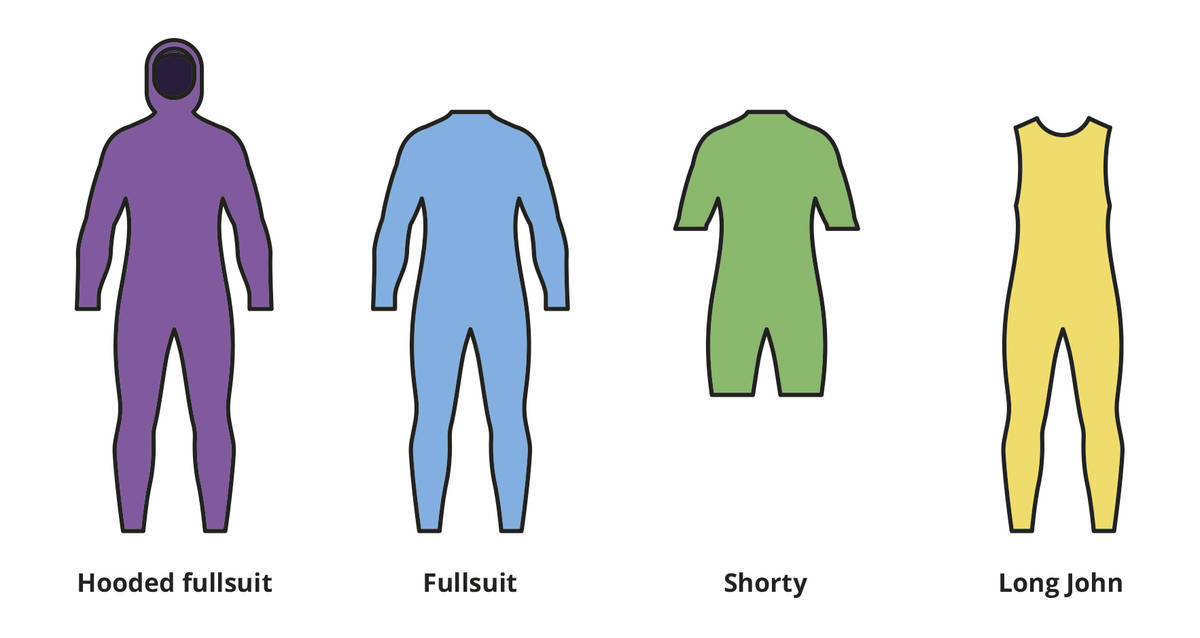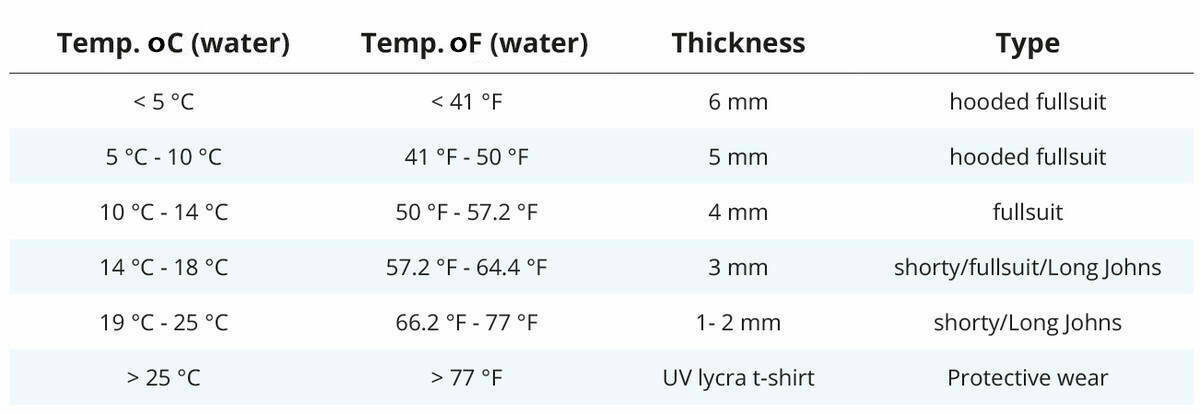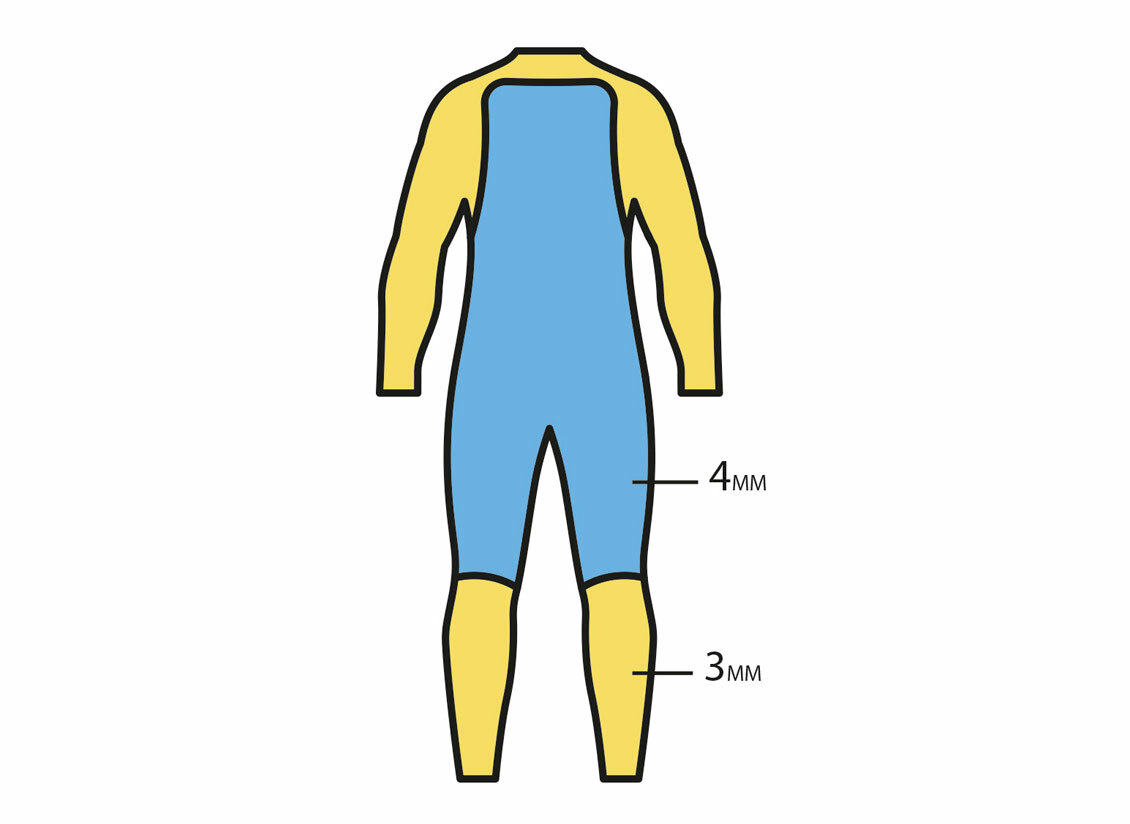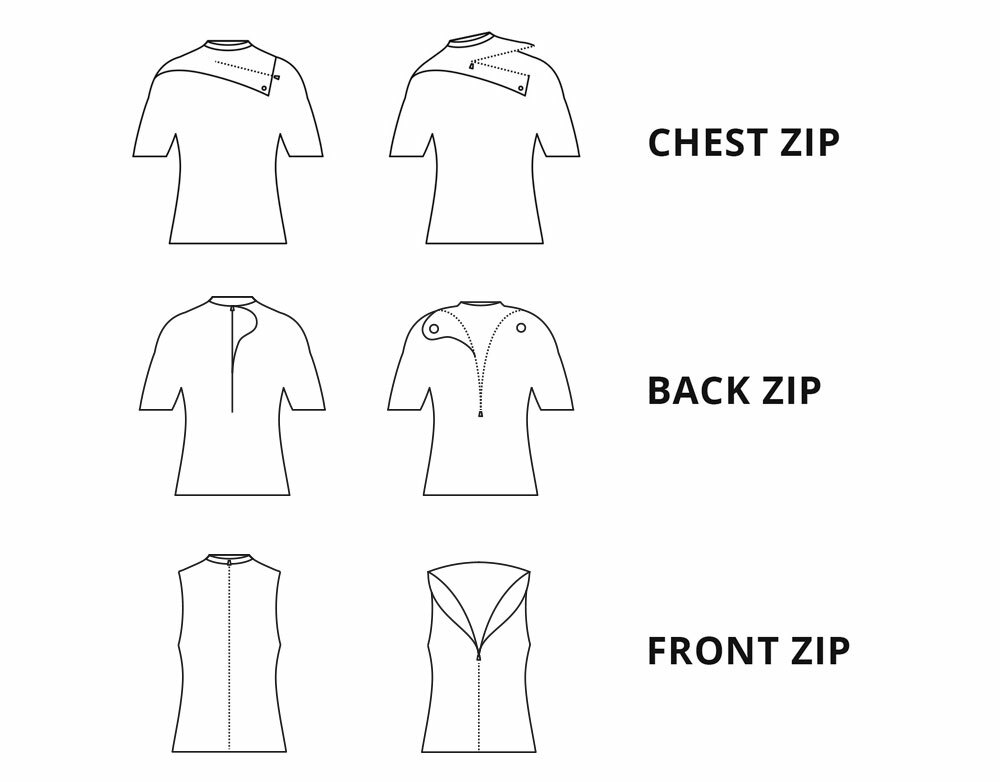Buying a wetsuit
When getting your first, or your next, wetsuit there are a few important things to think of such as:
- what for and where will you be using it
- thickness
- design
The wetsuit is neoprene wear purposed for water sports such as surfing, wakeboarding, kitesurfing, etc., as well as recreational activities such as tubing, which keeps you warm and comfortable in the water. Children’s wetsuits are also often used as highly protective layers for sun exposure and cold water.
People often think that the wetsuit is supposed to keep them dry, but what it actually does is trap a thin layer of water which your own body warms.
1. Type of wetsuit and thickness based on temperature as a key factor
Before we get to technicalities, we should take a quick look at what water sport you are into. Normally there are four main types of wetsuits - hooded fullsuit, fullsuit, shorty (also known as spring suit), and Long Johns. They can also vary, for example, full suit with short sleeves, or shorty with long sleeves.

Since the main purpose of your wetsuit is to keep you warm, choosing the type of wetsuit depends much on the temperature of the water/air you will use it for. The chill factor is also to be considered here.
For example, wind sports such as surfing, kitesurfing, windsurfing require thicker, respectively warmer wetsuits. Yet, they need to be flexible and durable, so you definitely need a good quality wetsuit. Wave skimboarding is similar. Basically, in those categories, it is good to buy a full suit as a first buy and a long-sleeve/short-sleeve shorty as a secondary.
On the other hand, inland surfing normally is in warmer, calmer waters, so there is less need for big suits (e.g., wakeboarding, flatland skimboarding, waterskiing). Here, the first buy would be a shorty (long/short-sleeved) and the second one would be a fullsuit for the winter/off-season.
SUP and kayak are often done in a Long John (and a windproof layer, if needed) due to the constant movement of shoulders and arms, which can be a bit harder and irritating in a thick fullsuit.
We made a table to make it easier to choose the right thickness and type of wetsuit depending on the waters you will be playing in. So it is very important that you research your spot beforehand.
Keep in mind that the chart gives guidance, but the choice of wetsuit varies also based on your personal needs and preferences. Bottom line is, you need to be warm and comfortable!

2. How to read the thickness?
The variation in temperature suitability is based on the level of activity, outside temperature, and weight. So keep those in mind as well. The UV Lycra mentioned for the warmest conditions is a special sunscreen t-shirt that you can use to protect yourself from the sun.
As you can see, the thickness of the neoprene is not always just one single number. But what does it mean when it is written with two numbers (or even three) divided by a slash?
The first number indicates the thickness of the neoprene in the torso/hip area, and the number after the slash indicates its thickness at your arms and legs. In the case of three numbers - the first one is the torso thickness, the second is the legs, and the third is the arms. For example, 4/3 mm means that your wetsuit has a thickness of 4 millimeters at the torso and 3 millimeters where it covers your limbs. A 4/3/2 mm wetsuit has 4 mm at the torso, 3 mm at the legs, and 2 mm on the arms. This is made so that you can keep your core temperature at a comfortable level and at the same time, have freedom of movement with your arms and legs.

3. Size and design...yes, it matters...a lot
Size
Picking the right size wetsuit is important because the tighter and closer fit you can get, without feeling uncomfortable, the more insulated you are. A good-fitting wetsuit should fit like a second skin and be able to keep this thin layer of water between you and the suit (but not too tight to stop your blood flow). To test if your wetsuit fits before you take it to the water, lift your arms over your head and stretch. It should slightly restrain but not restrict you to do so. Do a few squats and paddle with your arms in the air - if you can do those, then you most likely have a good fit.
The wetsuit should always feel tight around your neck (but not choke you) since this is an easy place for water to enter.
Apart from that, you get the wetsuits in standard sizing - XS, S, M, L, XL, XXL, or their UK equivalents - 4, 5, 8, 10, 12, 14. The only ‘catch’ here you may stumble upon is if you see an ‘S’ or ‘T’ after the size indicator, which stands for short and tall versions of the standard size. For example, ST means size small/ tall.
Design (Zips and Seaming)

In regard to the design, we already mentioned that it is important how much water enters from your neck, for example. Zipper types and the seeming are important design features affecting how much water entry/exit you get. The less, the better.
Chest zips are the best in regard to water entry because it is harder for the water to get in or out. This makes the chest zip design warmer and is relatively younger design;
Back zips allow easier access to the water (but also for you to get in the wetsuit) and can feel a bit colder. The back zip design is also older compared to the chest design, however, it allows easier access and comes at a lower price;
Front zip gives both you and the water very easy access and normally those wetsuits feel colder than the rest
The seaming is also important in regard to keeping you warm and preventing water from entering.
Flatlock stitching means that the neoprene panels have been stitched together on the outside and on the inside of the wetsuit
Sealed - refers to the panels being blind stitched and then glued to stop water from entering. It is needed for lower temperatures.
Sealed and taped means that after stitching and gluing, a tape has been placed over the glue on the inside to keep the warm air trapped inside.
4. What makes a good wetsuit?
Just like any other product, neoprene comes in different quality. A good quality neoprene holds a lot of air in it, which makes it a better insulator and respectively warmer. Also, it should be durable and stretchy.
Basically, a good wetsuit allows less water to go through it, fits and insulates well and is stretchy and durable. Normally, more stretch means less durability, but a good quality wetsuit can be both. Best quality wetsuits are normally 1 mm less thick, durable, with more stretch, more comfort, and simultaneously the same insulation as a thicker one because of good quality neoprene.
Ready for the water?
To sum it up:
- First, you need to think about what kind of sport and where you will practice
- Then you need to keep the water temperature in consideration
- Find the right size
- Choose a suitable design
And finally - have fun!
